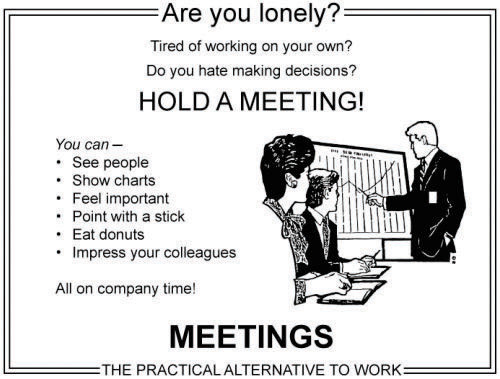12.0: Chapter Introduction
- Page ID
- 58766
The OOCSIP (On-And-Off-Campus Student Involvement Project)
Educational, social, and recreational events take place on college campuses all the time. You’ve probably seen information about these activities and been invited to them. But have you ever attended a campus committee meeting or a community meeting whose members include college employees? Probably not. Thus, you may not understand how a college and its community function. This project will help you acquire such understanding.

Getting Started
A college administrator we know overheard her seven-year-old daughter and another little girl talking about their parents. “What does your mother do?” asked the other child. “She goes to meetings,” replied the administrator’s child.
Whether in educational settings or business or elsewhere, meetings dominate the way many groups operate in American society. Estimates of the number of meetings that take place every day in our country range from 11 million to more than 30 million http://www.studergroup.com/dotCMS/knowledgeAssetDetail?inode=269049. One authority claims that the average chief executive officer spends 17 hours per week in meetings, whereas the average senior executive spends 23 hours per week. Amos, J. (2002). Making meetings work (2nd ed.). Oxford, England: Howtobooks.
If the average number of people in each of these meetings is only five and the average meeting lasts only one hour, this means that between 55,000,000 and 150,000,000 person-hours each day are being consumed by meetings. Assuming a 50-week work year, then, the total time devoted to meetings each year amounts to at least fifteen billion person-hours. As for you, yourself, one estimate is that you’ll spend 35–50% of every workweek in meetings, for a total of more than 9,000 hours over the course of your lifetime. Doyle, M., & Straus, D. (1993). How to make meetings work: The new interaction method. New York: Jove Books.
If meetings are so central to what groups do, and so time-consuming, it makes sense to pay attention to how they’re conducted. Like any other course of action, the process of engaging in meetings has a beginning, a middle, and an end. In our first section, we’ll consider the beginning—the planning part. Later we’ll look at techniques for facilitating a meeting, the use of Robert’s Rules of Order, and the best ways to follow up after a meeting.


